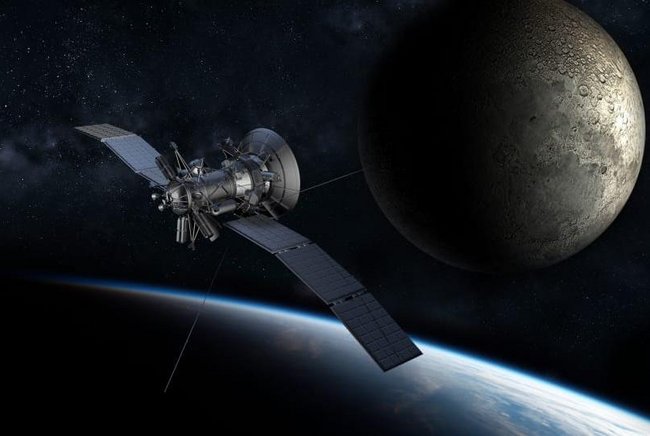Radboud University and TU/e to collaborate on new generation of astronomy instruments
On 20 September the universities sign the agreement and will officially start the Center for Astronomical Instrumentation (CAI).

To continue taking new steps in astronomy research, innovative instrumentation is needed, for example by developing radio antennas that operate in space instead of on earth. Researchers from the Radio Lab of Radboud University (RU) and Eindhoven University of Technology (TU/e) plan to collaborate on these developments. On 20 September these universities will sign the collaboration agreement in Nijmegen and will officially open the virtual Center for Astronomical Instrumentation (CAI).
The collaboration builds on the recent experience of the Radboud Radio Lab with the Chinese space mission Chang’e 4 to the ‘dark’ side of the moon. Together with the Netherlands Institute for Radio Astronomy (ASTRON) and the Delft company ISIS, the lab built the radio antenna on a Chinese satellite that is now orbiting behind the moon. The antenna is designed to detect weak radio signals originating from the early universe with the aim of learning more about its origin.
Antennas in space
“However, high-precision measurements require several antennas in space that together form a single large radio telescope. This technology, known as interferometry, is already being used on Earth, as was the case with the first image of a black hole that was taken by the Event Horizon Telescope, but it is not yet possible in space,” says Marc Klein Wolt, director of the Radboud Radio Lab. “The development of this technology of combined radio antennas in space requires the extensive experience in technological innovation that is available at Eindhoven University of Technology.”
Exchanging researchers and labs
“For years, TU/e has focused on specific technology developments for a wide range of applications, which now includes radio astronomy,” says Mark Bentum, professor of Radio Science at TU/e. “For example, we have developed new antennas for 5G applications that can also be used for radio astronomy. At TU/e we have access to advanced labs and measurement facilities.”
Earlier this year, TU/e and RU collaborated on a project in which a team of students from both universities took part in an experimental rocket launch in Sweden. “As part of this new collaboration we also plan to exchange students and staff. At both universities, for instance, we have the capacity to appoint two additional PhD students,” says Bentum.
Multiple applications
For the newly developed radio antennas to work together correctly in the future, it is crucial that they are positioned very precisely in space. Klein Wolt: “Because the wavelength of the radiation that we are measuring in the lunar survey (about 10 meters) is longer than the wavelength of the radiation used in, for example, the black hole survey (about 1 mm), it was easier to test the new technology in the moon survey. When we ultimately have an operational system, this space-based technology can also be used more easily for making sharper images of a black hole. The required precision will be much higher in that case.”
About CAI
The aim of the Center for Astronomical Instrumentation (CAI) is to develop astronomical apparatus at the limits of technological possibility. In collaboration with renowned institutions such as ASTRON, SRON and NOVA, CAI hopes to contribute to the international position of Dutch astronomy in domains such as radio, optical and gravitational wave astronomy and in technological innovation for space travel. At the same time, CAI hopes to have a positive impact on technological innovation in the Gelderland and Brabant regions of the Netherlands. The two partners in the centre complement each other with unique expertise: Radboud University contributes fundamental knowledge and a broad network in international astronomy and radio astronomy, while Eindhoven University of Technology contributes many years of experience in technological innovation and intensive contacts with the business community.